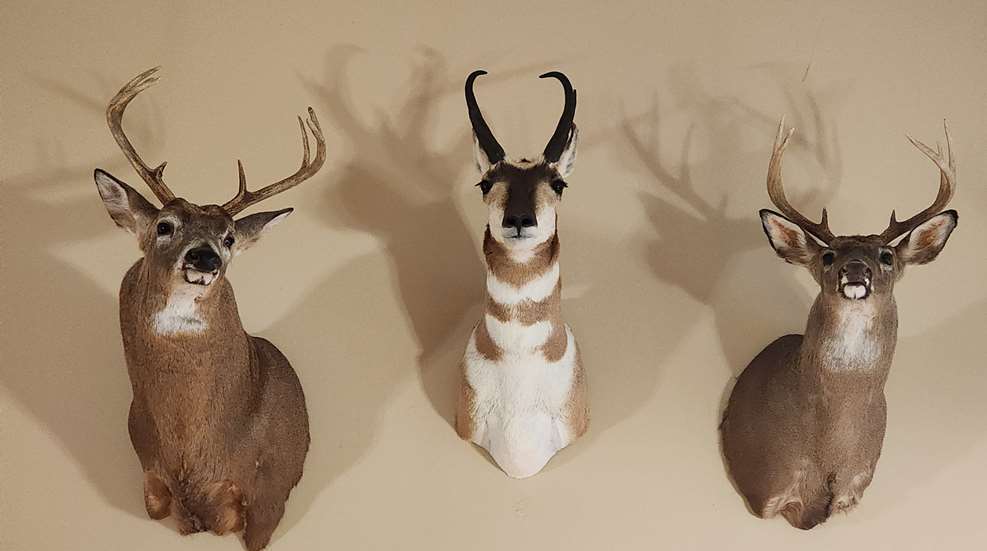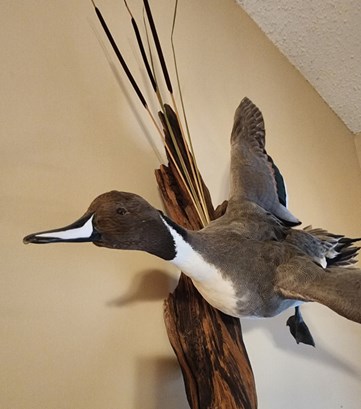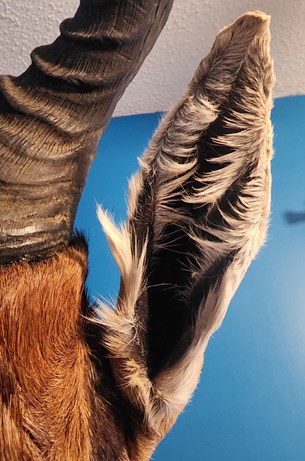
Taxidermy is a great way to preserve a prized animal, but you should know that taxidermists come in a pretty wide range of quality, and you often get what you paid for. Some specialize in one type of mount or in a particular species. Some are premium-priced artists who can turn any animal into a spectacular work of art; some are working out of their garages cranking out inexpensive whitetail heads as fast as they can for the local hunters. How do you pick the right one?
I don’t have to tell you what truly bad taxidermy looks like—you know it instantly when you see it. There are websites, books and calendars dedicated to showcasing weird and terrible mounts. This stuff is easy to identify, but what you need to worry about are taxidermists who can make a mount that looks decent now but will deteriorate more quickly than it should or that just doesn’t seem natural in a way you can’t put your finger on. How do you pick the taxidermist who best suits your vision for your trophy animal? First, you avoid these signs of a bad taxidermist.

He's priced under market. If everyone you know is paying $1,000 for a whitetail head-and-shoulders mount and you’ve found a guy who’ll do one for $400, ask yourself why. What corners is he cutting to get to that price? (Image: This pintail mount was a bargain and is average quality. The amateur taxidermist working out of his garage missed a few details, like painting the accent on a bill a little crooked.)
He can turn it around quickly. It’s very normal for a good taxidermist to need a year or even two to complete his work. If your guy says you’ll have your deer back in four months, it’s because he has nothing else to do. If no one else is taking their mounts to his shop, there’s a reason.
He’s located far away from where you shot the animal. This isn’t a deal-breaker, because there are plenty of amazing taxidermy artists who work on species from around the world. But a taxidermist in Wyoming almost certainly does a lot more pronghorn mounts than a guy in South Carolina, and all else being equal, he’s more likely to get the look just right.
He has a specialty, but you’re taking him something different. If a taxidermist specializes in bear rugs and you’re taking him a pair of sea ducks, you might find that he’s great at one thing and mediocre at everything else.
Many people have a favorite taxidermist near their home or across the country, and they ship all of their animals to that shop. Others, including myself, tend to use a taxidermist that comes highly recommended in the area where the animal was taken. I always ask locals and my hunting guide for recommendations on someone they’ve used who can do a great job with this particular species and who is familiar with shipping finished taxidermy. When you find a taxidermist you’re thinking of using, do everything you can to visit his shop and take a look at his finished work. Here’s what you’re looking for.
Does it look natural? This is the most important question. Does the animal look like it would have looked in the field? If it looks startled, scared, confused, or just “off,” the taxidermist hasn’t done great work making it look natural.
Are the eyes right? Eyes sunken in or bulging out, even slightly, will contribute to that unnatural look. Note that the tear ducts should be carefully shaped, not flat or puttied down.
Look at the nose. If the nose looks like it’s been just painted black, it might start chipping or fading with time. You want the nose to be a natural fade or blend of black/gray/brown, and it should be just a little bit damp-looking without being shiny. The nostrils should be actual holes that go into the muzzle, not sealed or painted shut at the base (yes, I’ve seen this).

Examine the ears. The ears of a big-game animal should be smooth and firm on the edges. It’s natural to lose some hair on the inside of the ears, but I own some taxidermy where the inside of the ears is nearly bald and basically painted black. Needless to say, I won’t use that taxidermist again. Ears should be firm through the very tip and look natural, with the inside showing pinkish skin covered with hair. (image: The ears on this red hartebeest were poorly done.They’ve lost most of the hair and have been painted a slicky, shiny black.)
Are there gaps? Gaps at the base of the antlers, tiny gaps around the eyes or tear ducts, or gaps around the mouth are signs of sloppy work. And for goodness sake, if the gaps at the mouth are bad enough that the deer appears to be smiling, run!
Of course, budget plays a role in your choice. Many hunters are happy with “pretty good” taxidermy and don’t need to spend the money on museum-quality showpieces. And it’s OK to use different taxidermists for different purposes. I know a local guy who works out of his garage for surprisingly low prices. I took him a beautiful pintail drake and he did a perfectly serviceable job on it, although I could pick out a detail or two that I might have wanted done differently. I’ll take him a mallard or a wood duck someday. But if I ever shoot a bucket-list duck like a harlequin or a king eider, Garage Guy isn’t going to cut it. I’ll be going to a specialist for that.
The best advice for spotting a bad taxidermist is to avoid anyone who is suspiciously cheap or suspiciously fast. Rather, pick a taxidermist who will meet or exceed your expectations by asking for recommendations and, ideally, examining some of his work before you commit your hard-earned trophy.














































